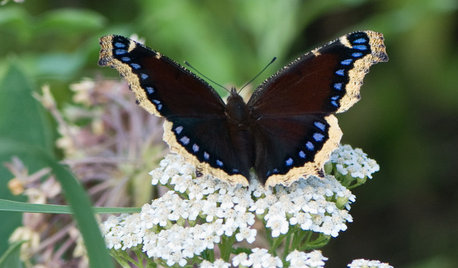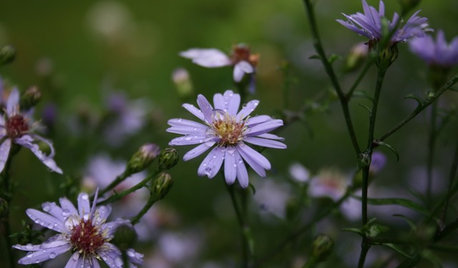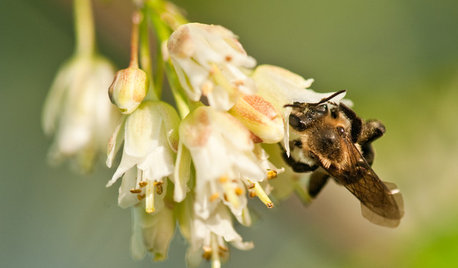Overwintering butterfly pupae
onelunalady
11 years ago
Related Stories

GARDENING GUIDES6 Plants That Beat Butterfly Bush for the Wildlife Draw
It's invasive, a nonnative and a poor insect magnet. Check out these better alternatives to butterfly bush in the garden
Full Story
GARDENING GUIDESMourning Cloak Butterflies Herald Spring
These butterflies feed at tree-sap flows in spring and visit native plant flowers for nectar in early summer
Full Story
GARDENING FOR BUTTERFLIES7 Native Wildflowers to Make You an Awesome Butterfly Host
Offer the leaves of these and you’ll get more butterflies than with flower nectar alone
Full Story
GARDENING FOR BUTTERFLIESBe a Butterfly Savior — Garden for the Monarchs
Keep hope, beauty and kindness alive in the landscape by providing a refuge for these threatened enchanters
Full Story
GARDENING GUIDES6 Steps to Creating Your Butterfly Garden
Encourage these fanciful winged beauties to visit your garden while helping restore their fragmented habitat
Full Story
CALIFORNIA NATIVE PLANTSGreat Design Plant: Asclepias Is Attractive to Monarch Butterflies
Increase monarch butterfly populations in California by planting stunning native milkweeds
Full Story
GARDENING FOR BUTTERFLIESButterfly Gardening: Delight the Eyes With Living Sculptures
Surprise and thrill with a garden that attracts magical winged creatures, bringing color, movement and life
Full Story
WINTER GARDENING10 Native Wildflowers to Beautify Your Winter Garden
They stand strong in wind, feed wildlife and are easy to grow. But you may want to add these plants for their looks alone
Full Story
FLOWERS6 Overlooked Asters for Tough Spots
Whether your garden has baking sun or dry dense shade, boggy soil or sandy gravel, there's an aster for that
Full Story
GARDENING GUIDESGreat Design Plant: Staphylea Trifolia Shines in the Shade
Plant American bladdernut for 3 seasons of interest: spring flowers and striped brown branches and bladder-like seedpods in fall and winter
Full StoryMore Discussions







bananasinohio
KC Clark - Zone 2012-6a OH
Related Professionals
Billerica Landscape Contractors · Stoughton Landscape Contractors · Kearny Landscape Contractors · Palatine Landscape Contractors · Santa Ana Landscape Contractors · Alsip Fence Contractors · Austin Fence Contractors · Charlotte Fence Contractors · Killeen Fence Contractors · Lexington Fence Contractors · Sunrise Manor Fence Contractors · Thousand Oaks Fence Contractors · Wallingford Fence Contractors · Manville Window Contractors · Ruskin Window ContractorsonelunaladyOriginal Author
terrene
bananasinohio
MissSherry
susanlynne48
terrene
KC Clark - Zone 2012-6a OH
ArleneGreen
bernergrrl
KC Clark - Zone 2012-6a OH
kaboehm (zone 9a, TX USA)
kaboehm (zone 9a, TX USA)
KC Clark - Zone 2012-6a OH
kaboehm (zone 9a, TX USA)